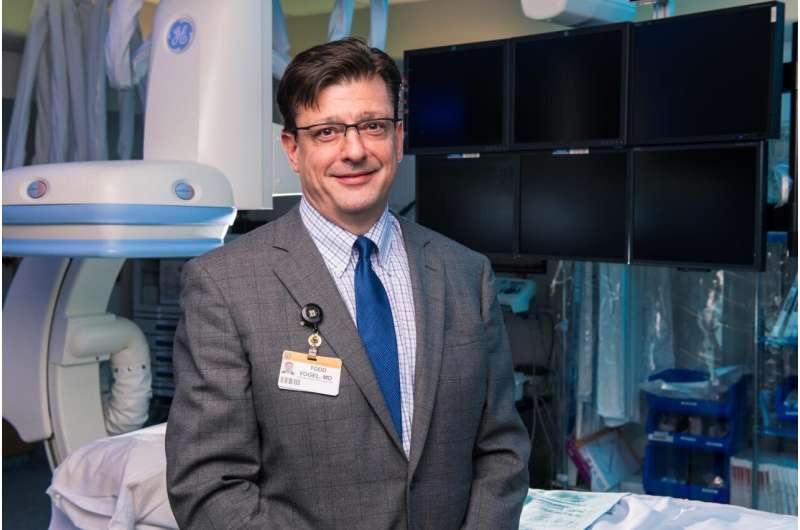Endovascular aneurysm repair linked to higher readmission rates

Ruptured abdominal aortic aneurysms (rAAA) are responsible for nearly 2% of all deaths in US men over the age of 65. Endovascular aneurysm repair (EVAR) has emerged as a newer and less invasive alternative to open repair for rAAA, and current guidelines recommend EVAR as a first-line option for treatment of rAAA when certain criteria are met. But researchers from the University of Missouri School of Medicine have discovered that while EVAR is more commonly utilized for rAA, shortens hospital stay and has a lower initial mortality rate, the odds of hospital readmission after EVAR are 1.5 times higher compared to traditional open repair.
“A high rate of readmissions in vascular surgery patients is associated with increased patient morbidity and mortality, along with increased costs to both hospitals and patients,” said Todd Vogel, MD, associate professor of vascular and endovascular surgery. “Understanding contributing factors leading to hospital readmission after emergency rAAA procedures may lead to improved patient outcomes and decreased costs.”
Vogel’s team analyzed 3,629 emergency or urgent open rAAA and 5,037 EVAR procedures over three years. They found EVAR had a significantly lower hospital mortality rate (21.4% for EVAR vs. 33.5% for open) and a 3.5-day shorter length of stay. However, EVAR patients had a significantly higher readmission rate within 30 days (EVAR 18.9% vs 14.3% for open). Infection complications were the most common reason for readmission for both types of procedures, but Vogel identified additional risk factors specific to EVAR.
“After adjusting for comorbidities and procedure type, we found additional EVAR-specific risk factors for readmission included prior EVAR repair, longer length of initial hospital stay and presence of chronic kidney disease or coronary artery disease,” Vogel said. “Further investigation into reasons why a less invasive procedure has a higher readmission rate are needed”
Source: Read Full Article


